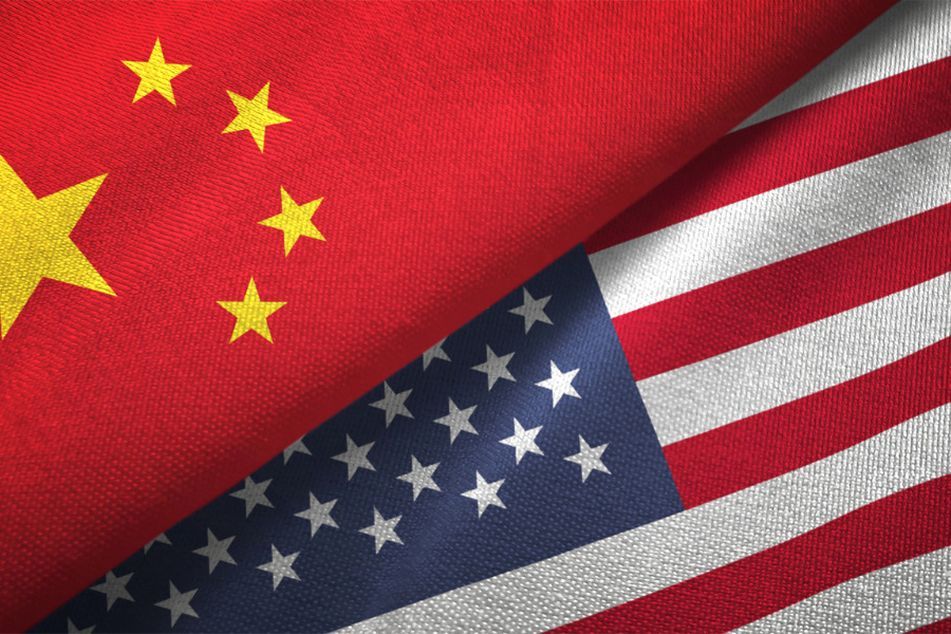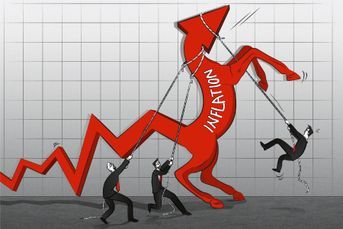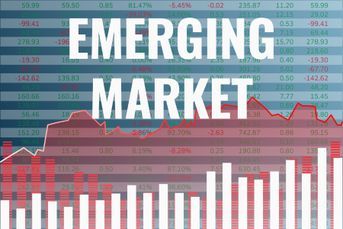Can US, China reach climate agreements ahead of COP 28?

A meeting in California aimed to find some common ground.
There’s been an unwritten rule during the past decade of climate diplomacy: Good things can happen when the world’s two biggest economies are aligned. If the US and China can again come together in the quest to slash greenhouse gas emissions, there’s hope that progress can be made at COP28 in Dubai.
To lay the groundwork for the summit, which starts later this month, the two countries’ top climate negotiators met this week in Rancho Mirage, California. Five days of talks, originally set to last just four, concluded Wednesday without yielding an immediate public breakthrough, though the US touted “common ground on a number of issues” and China said there were “positive results.”
The window for success is shrinking and the bilateral relationship faces new challenges, even as US President Joe Biden and Chinese President Xi Jinping prepare to meet on the sidelines of the Asia-Pacific Economic Cooperation summit in San Francisco in mid-November. The upcoming US presidential election is set to stoke political rhetoric targeting Beijing, and Biden will face scrutiny on the campaign trail for any moves seen as soft on China, narrowing the lane for dealmaking. China’s sputtering economy and anxiety about energy security have also limited its room to maneuver on climate policy. An upcoming presidential poll in Taiwan is another wild card for volatile relations between Washington and Beijing.
“Historically, climate change was the one area where we were always able to find some common ground,” says Joanna Lewis, an expert in international policy at Georgetown University. “More recently, the broader tensions of the relationship have spilled over into the US and China’s ability to do substantive engagement even on the climate issue.”
Their progress now depends greatly on two veteran negotiators: John Kerry, the US climate envoy, and his Chinese counterpart, Xie Zhenhua, a former environment minister. Both men have had significant influence over their countries’ climate policies, and their camaraderie will be hard for any successors to duplicate. Xie was a major architect of Xi’s 2060 net-zero pledge, though he has in recent years had to navigate calls within China’s bureaucracy for more restrained green measures as the nation grapples with economic and energy security concerns. Kerry is a former secretary of state who has unusual access to Biden after decades serving together in the Senate.
Together, Xie and Kerry hammered out a joint statement in 2014 that set the stage for the landmark Paris Agreement a year later. Their promise to collaborate in the final days of COP26 talks in Glasgow provided the momentum, and even some of the language, that helped produce the summit’s final pact.
The Dubai meeting may be one of the last times the two sit across from each other. Kerry is set to mark his 80th birthday at the United Nations summit. Xie, who will have just turned 74, suffered a stroke earlier this year that sidelined some face-to-face talks. The Chinese government is preparing to appoint Liu Zhenmin, a top diplomat, to replace Xie after COP28, according to people familiar with the plan, who asked not be identified as the matter is private.
Kerry and Xie have had more than 50 meetings since early 2021, though they’ve worked as diplomats together far longer, having had conversations over seafood in Boston and duck in Beijing as well as during impromptu meetings in airports around the world. Kerry said in July the two have a “special relationship” marked by “great respect for each other” — and recent encounters have been marked with exchanges about each other’s health and well-being. And even last year, when Beijing suspended formal climate negotiations with the US after then-House Speaker Nancy Pelosi made a controversial visit to Taiwan, the two kept talking. “Kerry and I have a friendship for 25 years” and continued private conversations, Xie told reporters at the climate summit in Egypt last year.
The diplomats’ close ties are credited as one reason Xie was effectively pulled out of retirement in 2021, following Kerry’s appointment in Washington.
China and the US have good reasons to find consensus. The world is set to heat up beyond the 1.5C goal set in Paris unless the two nations most responsible for today’s planet-warming pollution take aggressive action. Protecting the environment is popular within China and one of the few ways it can earn goodwill from countries that feel threatened by its rising economic power. For the US, China is a critical intermediary to the climate-vulnerable nations that are a potent negotiating bloc at the annual COP talks.
Despite those incentives, Xie and Kerry are navigating around “political land mines,” says Li Shuo, incoming director of the China Climate Hub with the Asia Society Policy Institute. “The bilateral relationship is limiting the political space on each side, and that makes both countries drive hard bargains.”
US and Chinese negotiators want a package deal to emerge from COP28, according to people familiar with their discussions who asked not to be named because the talks are private. When talks in Beijing this summer ended without a pronouncement, Kerry stressed that he and Xie didn’t want to rush out a weak declaration for appearance’s sake. Instead, he said, they were striving for something meaningful. Xie said in late September that he and Kerry have been holding biweekly videoconferences, and the two men huddled together for days of talks in California earlier this week. Though the session didn’t yield an immediate public declaration, it helped build the foundation for possible future pronouncements.
It would be a major achievement if both countries committed to boosting the share of their total power production that comes from clean energy, the people say. Another potential breakthrough would be some type of coordination to channel money to poorer nations so they may transition more quickly to green energy or help identify projects for investment that these countries could afford, they say.
Kerry also has encouraged China to publish a plan for slashing methane pollution. The country promised to develop an action plan in 2021, but its release was delayed amidresistance internally from its agriculture and energy ministries, which are worried about the impact on coal mines and rice fields. The blueprint unveiled Tuesday lays out broad goals around better controlling methane releases but does not cite specific reduction targets for that potent greenhouse gas.
While the omission was a disappointment to some climate activists, the move was still seen as a gesture of goodwill from Beijing. It also lays the groundwork for China to include methane in its next emissions-cutting pledge under the Paris Agreement,says David Waskow, director of the World Resources Institute’s international climate initiative. China’s existing greenhouse gas reduction pledge doesn’t include methane — effectively ignoring 20% of the country’s emissions.
Chinese officials and experts have also recently reiterated publicly that developed nations need to deliver on promises to cut emissions and provide more finance before making demands on others.
While China is keen to emphasize its record-setting installation of solar and wind power, there’s growing angst among US officials about China’s decision to permit 106 gigawatts of coal power capacity. That’s roughly equivalent to bringing two plants online each week. As China’s emissions continue to rise, America’s are declining. Washington enacted a sweeping climate law last year that devotes hundreds of billions of dollars to clean energy projects, and it’s clamping down on methane releases from the oil industry. Beijing, meanwhile, chafes at trade controls that it says target green energy gear needed to accelerate the transition, including US tariffs on solar panels first imposed in 2011 and restrictions on imported goods tied to alleged forced labor.
“These trade tensions and market tensions are always a factor,” says Alden Meyer, a senior associate with research group E3G. “The US is not going to make a concession on trade to get something on climate, just like it won’t make a concession on Taiwan or human rights or the South China Sea.”
The two superpowers are on opposite sides of weighty issues that will be front and center at COP28—including what nations should contribute to a fund to compensate global warming victims and whether to expand the pool of wealthy donor nations for climate finance. In UN climate deliberations, China’s official classification as a developing country has limited its formal financial contributions, but the US and European Union want it to provide more.
Climate-vulnerable nations are pressing diplomats at COP28 to commit to phasing out all fossil fuels, though the proposal faces long odds with the war in Ukraine stoking energy concerns globally and oil-rich United Arab Emirates hosting the summit. The US had a similar campaign at COP27 in Egypt, though the push was ultimately unsuccessful. Xie said at a September conference in Beijing that fossil fuels are essential to maintaining grid stability and that completely abandoning the energy source is “unrealistic.”
Nations also are starting to put together the emissions reduction plans for 2035 required under the Paris deal. It will be the first pledge from China since it promised in 2020 to peak carbon pollution by the end of the decade. Wang Yi, an ecological economist who was a member of China’s COP27 team, has pushed back on expectations for stronger targets, saying there should be a more “holistic and pragmatic” approach. “The goal-oriented or number-driven process should be changed, and more should consider the transformation led by practical actions and solutions,” he says.
Still, there are other, more discrete opportunities for bilateral progress, including promises to share best practices on stifling methane emissions from livestock and preserving grid reliability while integrating renewable power. They may not be headline-grabbing pronouncements, Waskow says, but they would be meaningful steps forward. “We could really pursue transformation on so many fronts—and some of that is nuts and bolts,” he says.
China’s foreign ministry said in a statement that it hopes “the US will work with China in the same direction and create favorable conditions.” The US State Department did not respond to a request for comment.
As nations prepare their strategies for the talks in Dubai, any signal from the US or China will hold outsize sway. “They are the two biggest emitters, the two most powerful economies, the geopolitical rivals,” says E3G’s Meyer. “If they can broker an agreement, it makes it a lot easier for the rest of the system to move.”
Learn more about reprints and licensing for this article.







